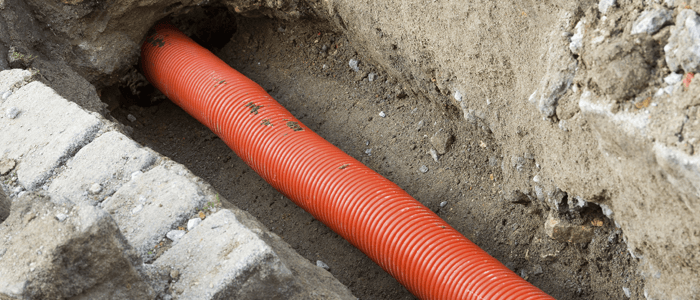Underground utilities: Call before you dig!

Damage to underground utilities from excavation and trenching activities is more common than is generally believed. Many construction projects require some degree of excavation or trenching and it is critical that all efforts are made to prevent damage to these utilities.
Underground utilities can include, but are not limited to the following: communication lines, power lines, natural gas pipes, sewers and water pipes and alarm systems. Each type of underground utility presents its own hazards and protection problem. There is a significant injury exposure to workers from explosion, fire, asphyxiation, electrocution as well as potential large losses in the form of damaged equipment and business interruption.
There should be a written procedure for conducting utility locates. The procedure should include written documentation that the utility locate has been completed. Simply receiving verbal confirmation is not sufficient. Documentation confirming all necessary precautions have been taken is very important in the event a utility is damaged. Whenever excavation or trenching is performed, or heavy equipment is moved, the necessary precautions must be taken to identify utilities and minimize the potential for damage. An emergency plan should also be established in the event damage occurs.
The American Public Works Association (APWA) provides uniform colour coding for easy identification.
International Colour Code for Marking Underground Utility Lines
White:
Proposed Excavation
Pink:
Temporary Survey Markings
Red:
Electric Power Lines, Cables, Conduit and Lighting Cables
Yellow:
Gas, Oil, Petroleum, or Gaseous Materials
Orange:
Communication, Alarm or Signal Lines, Cables or Conduit
Blue:
Potable Water
Purple:
Reclaimed Water, Irrigation and Slurry Lines
Green:
Sewers and Drain Lines
All excavation, trenching or underground construction activities have the potential to damage utilities. The contractor, working with the owners of the underground installations, must identify the utilities, locate them, and determine the potential hazards and method of controlling them. A good place to start is to create a checklist identifying all of the utility services that must be contacted before any work begins







